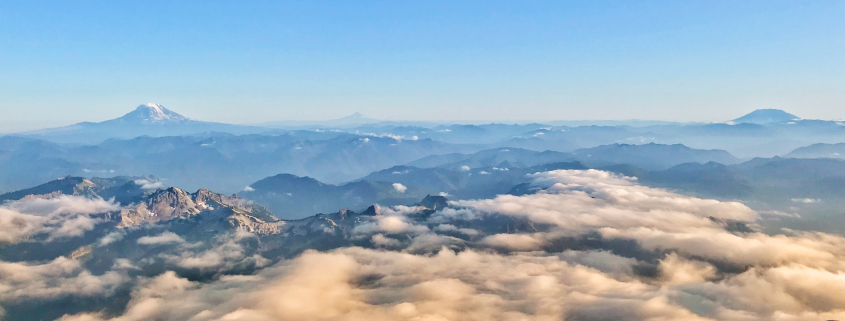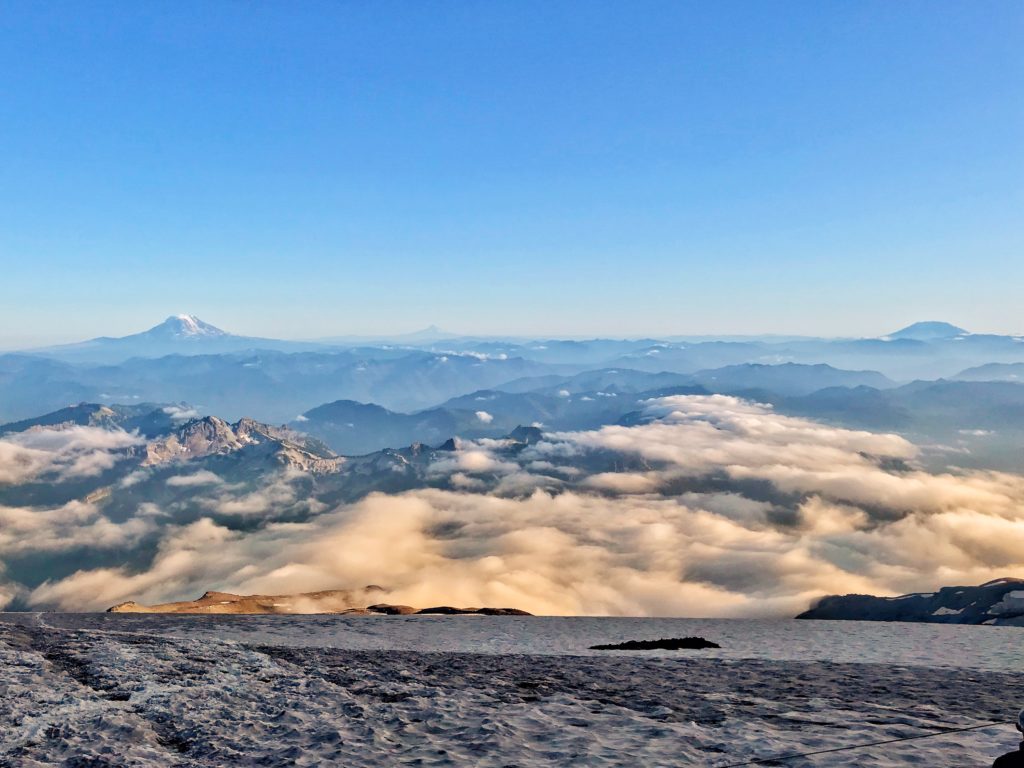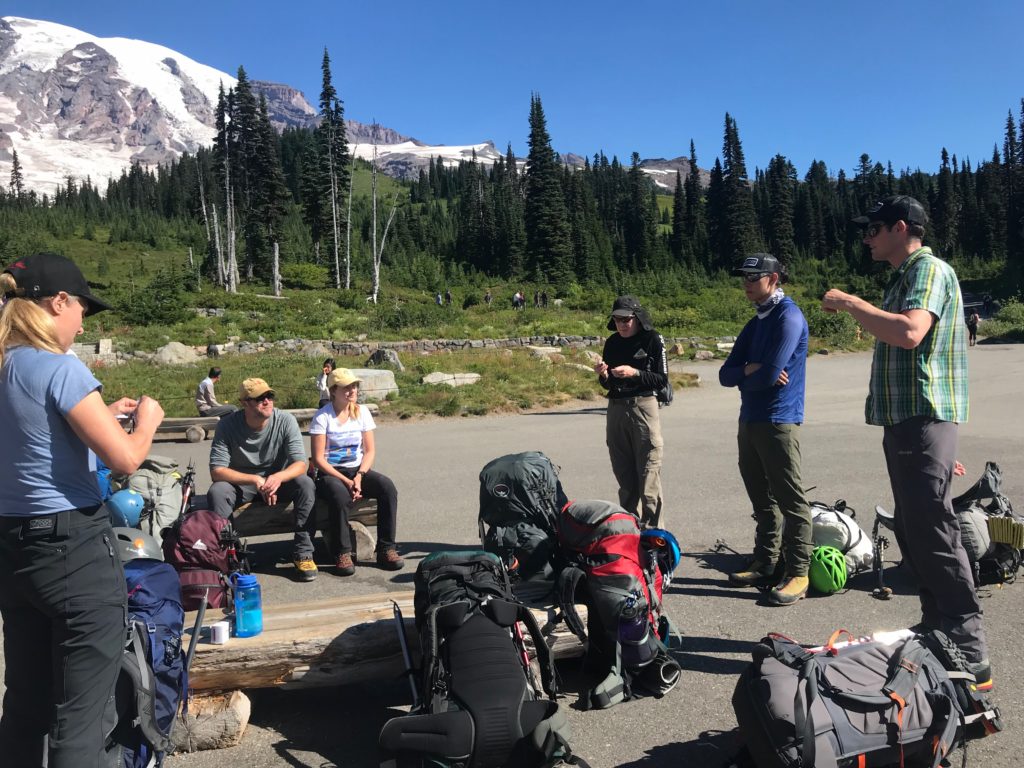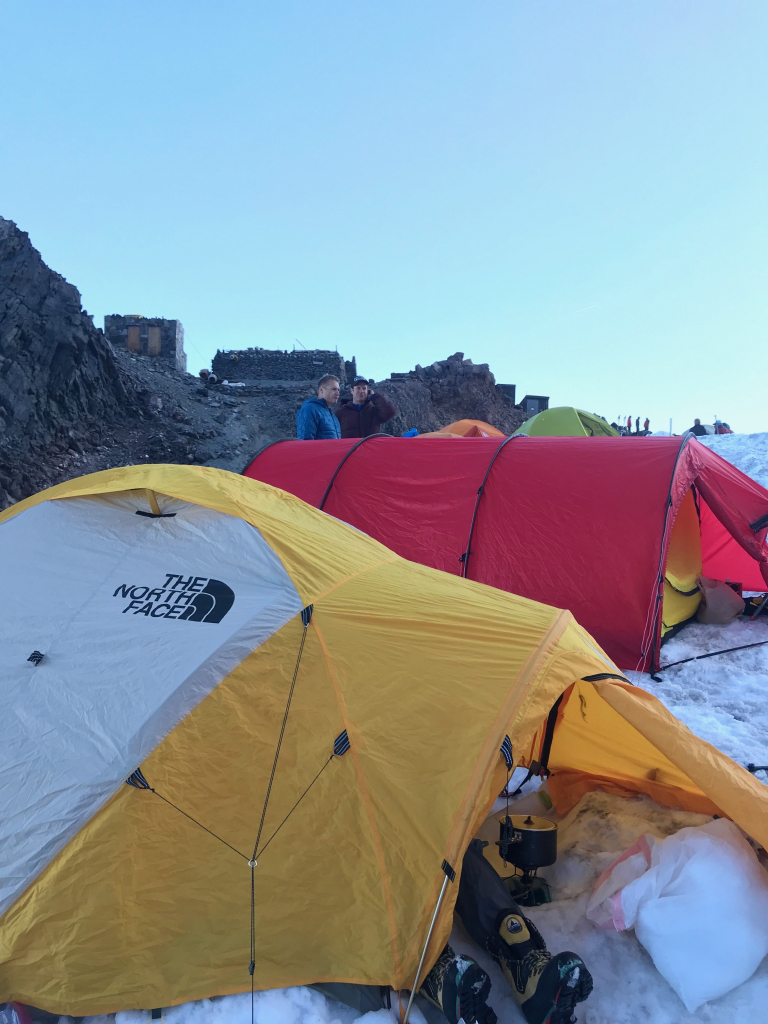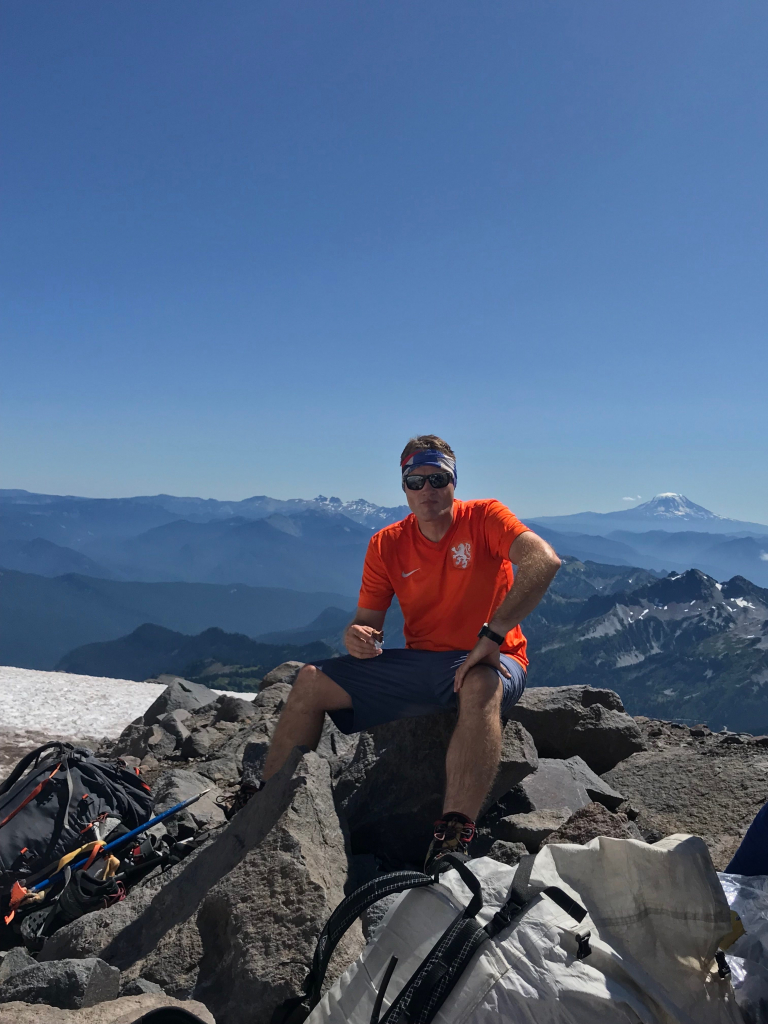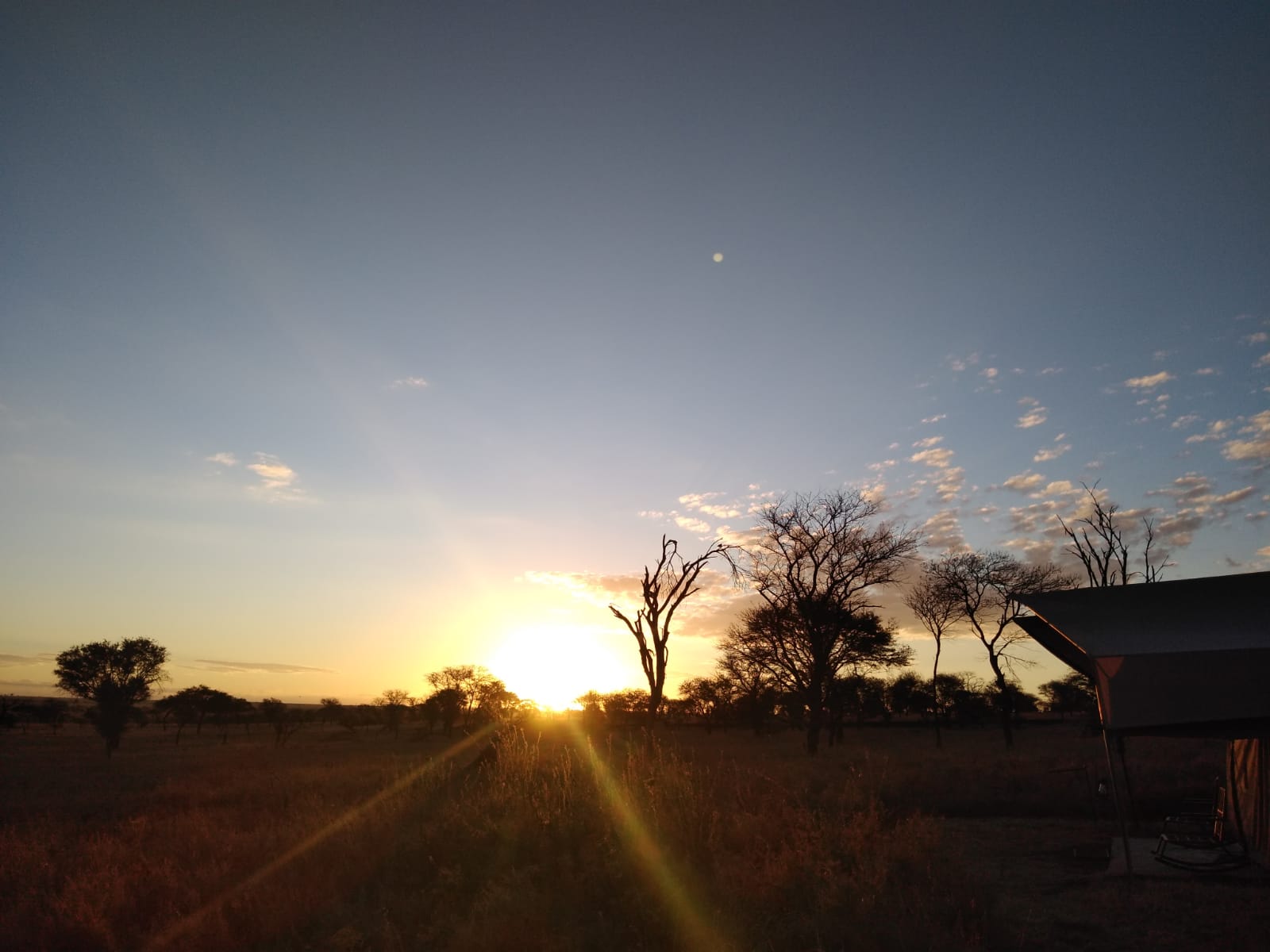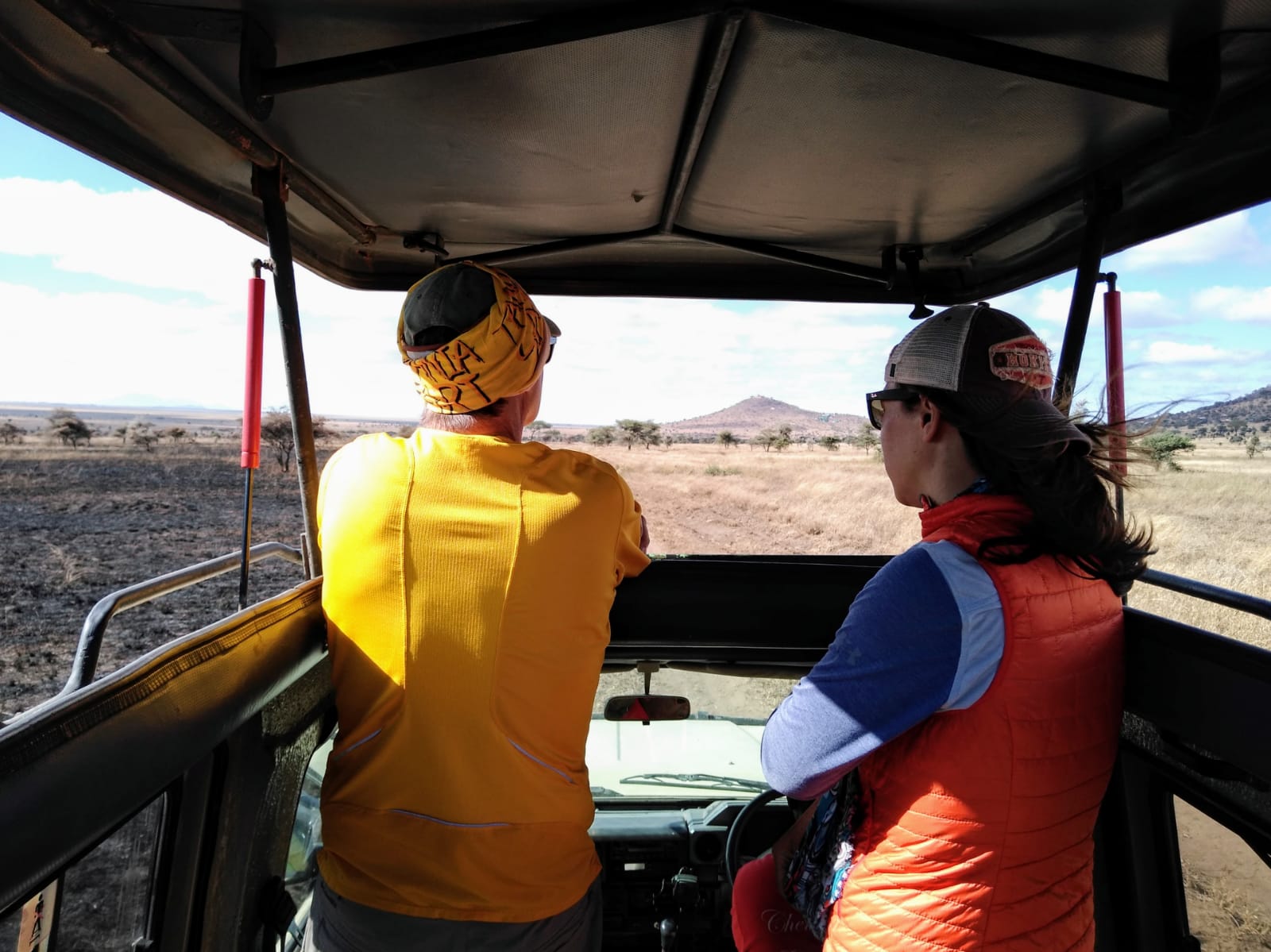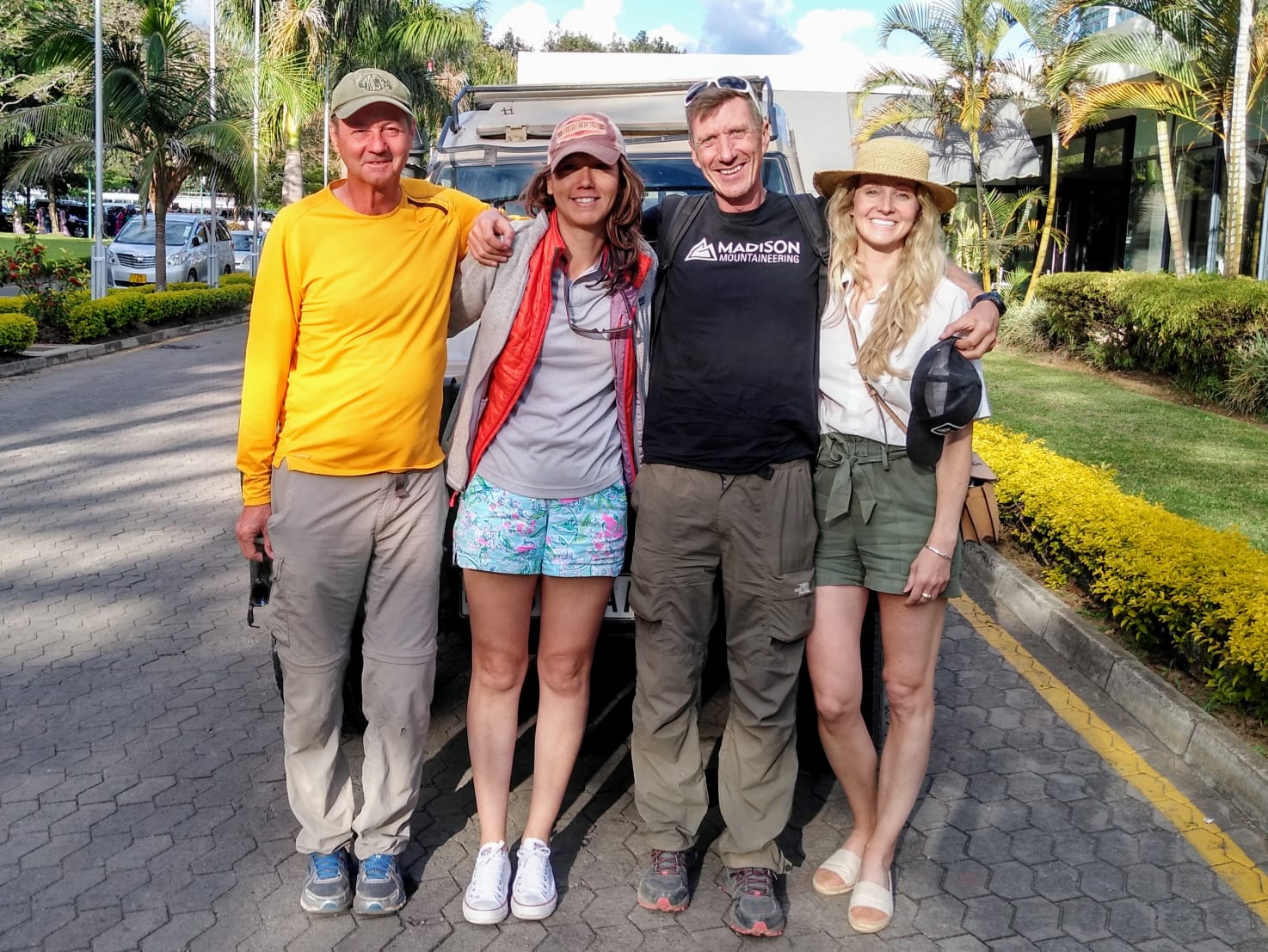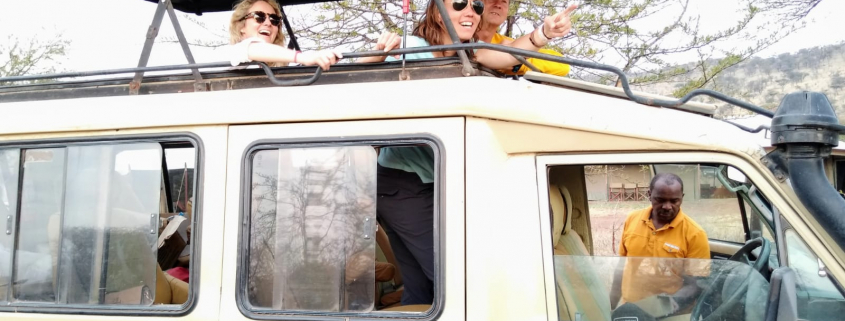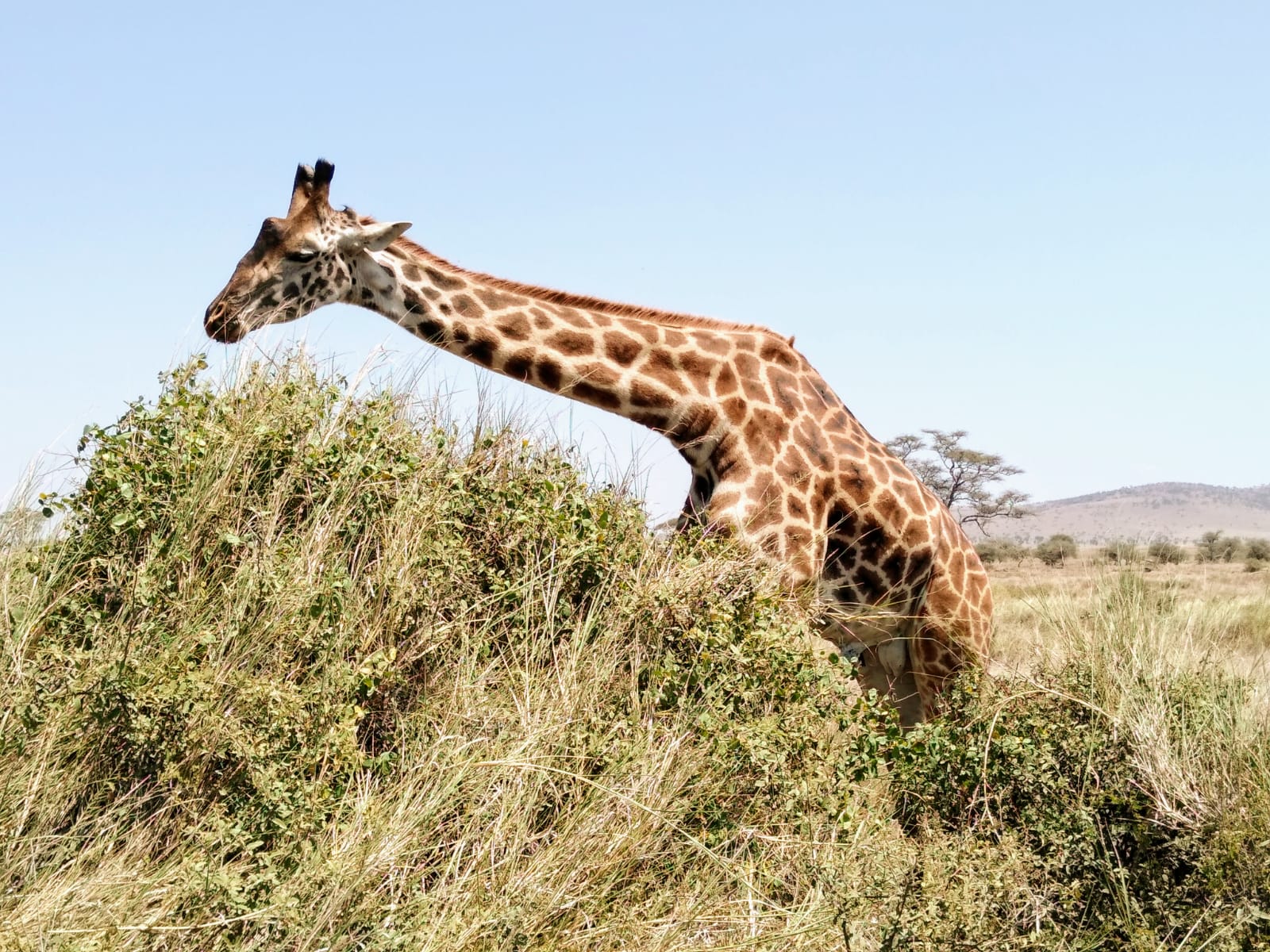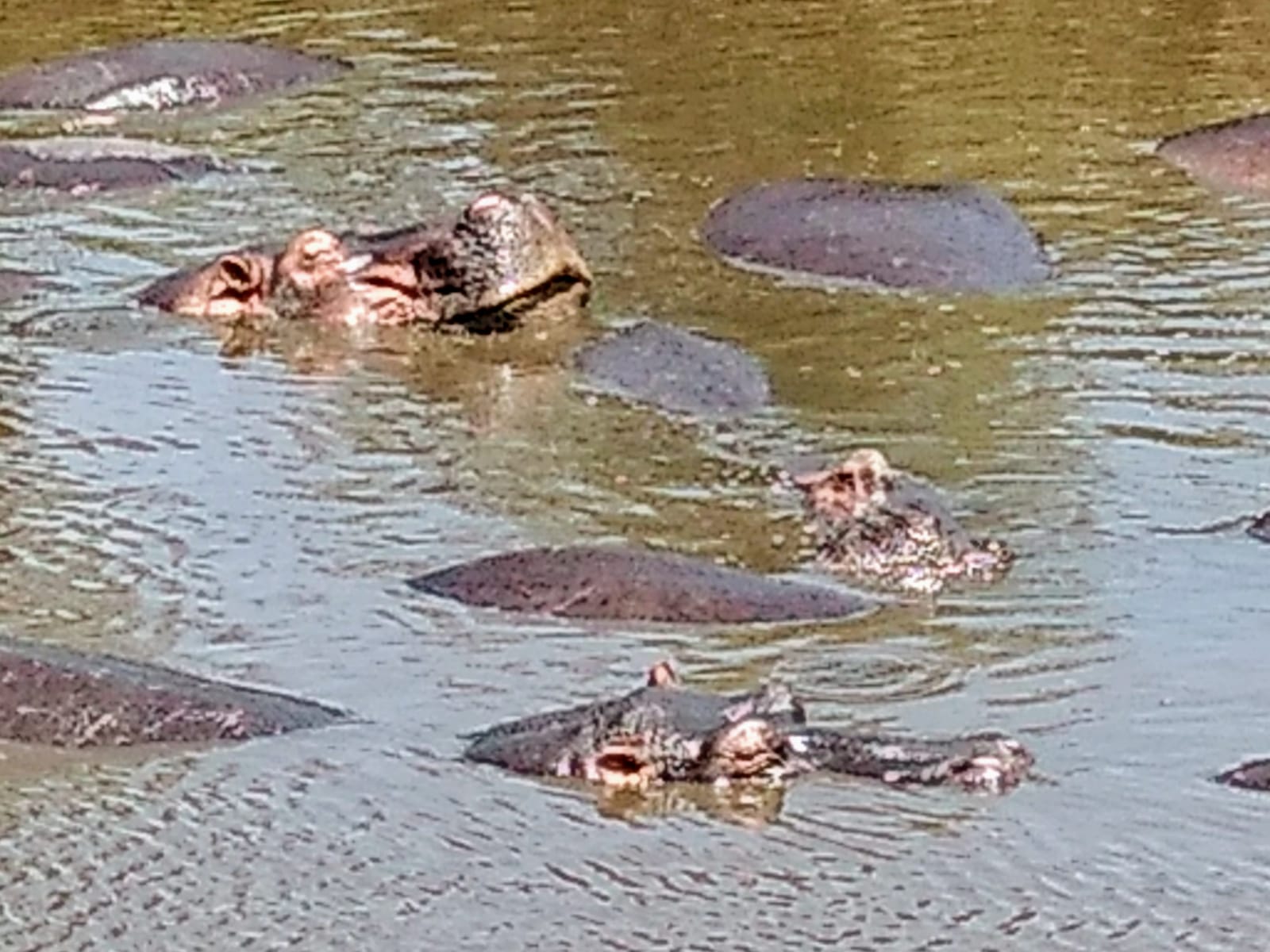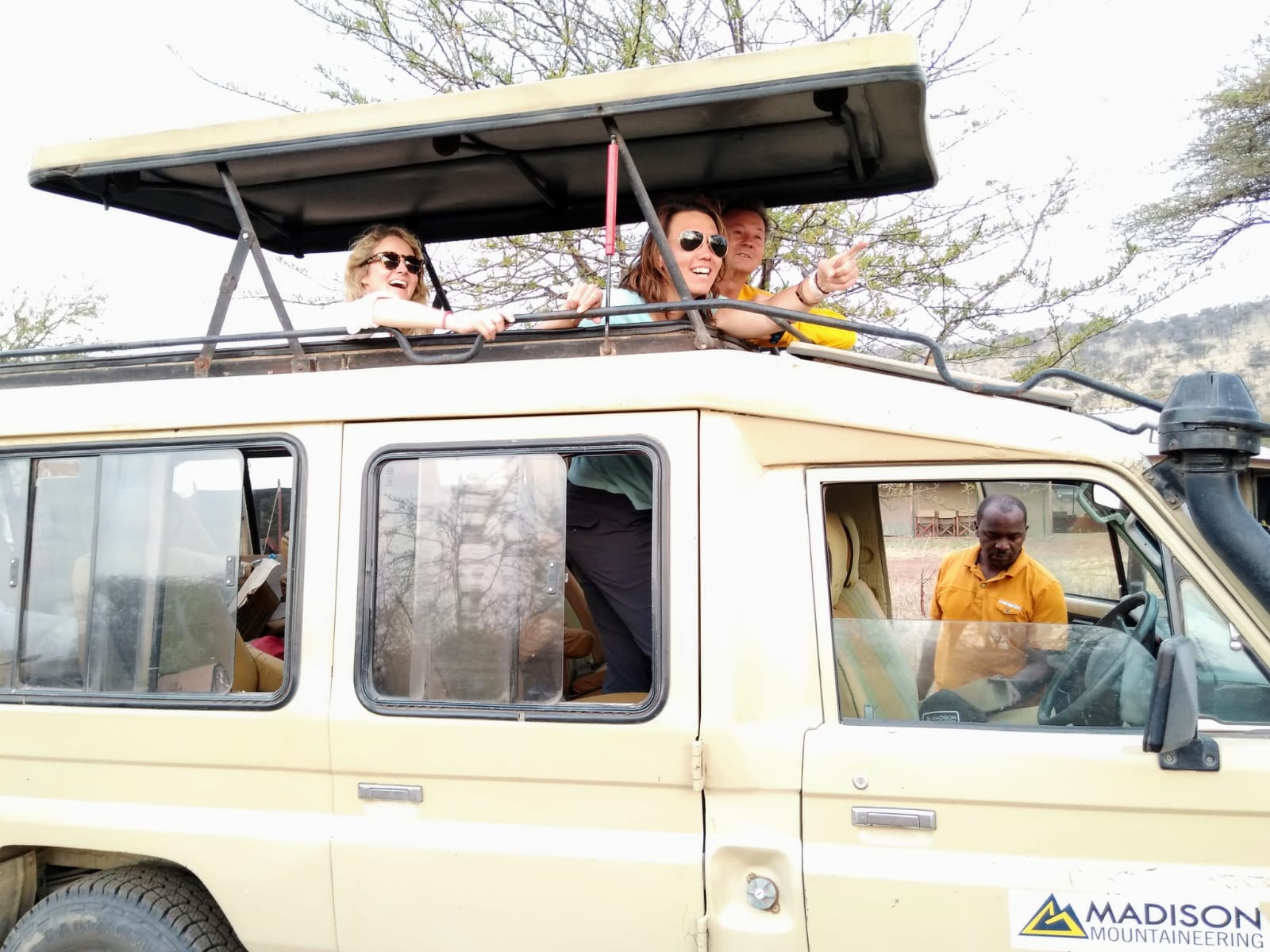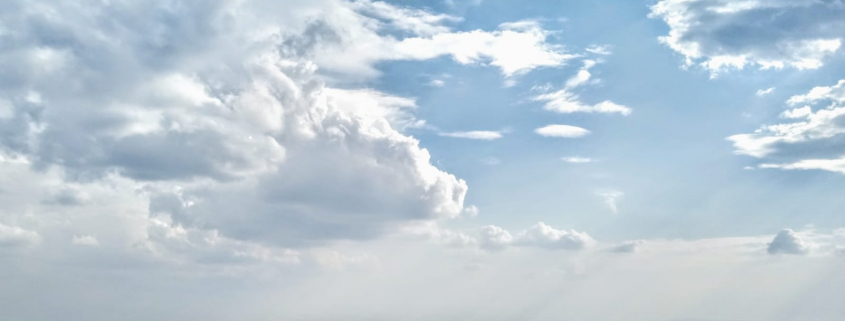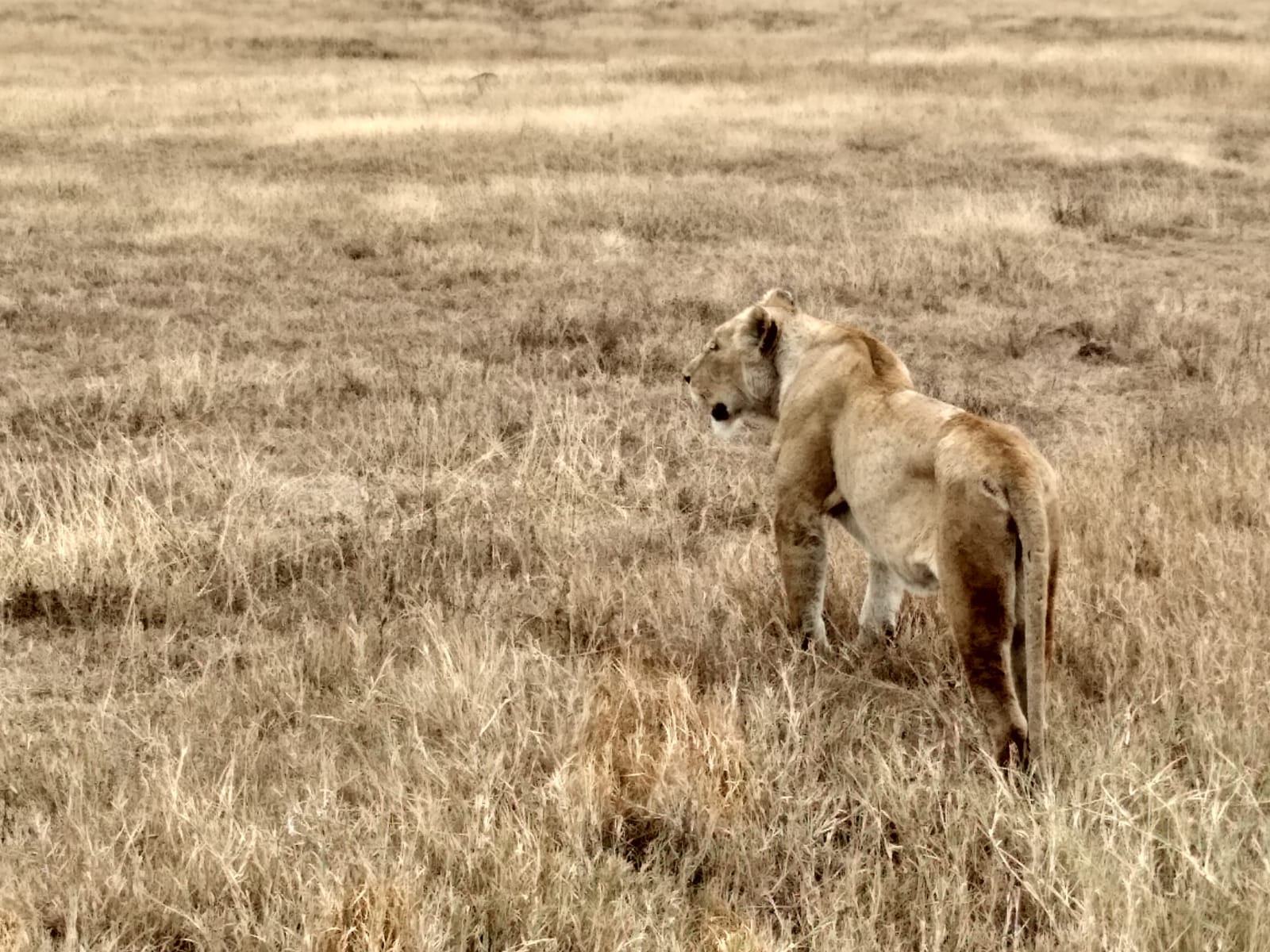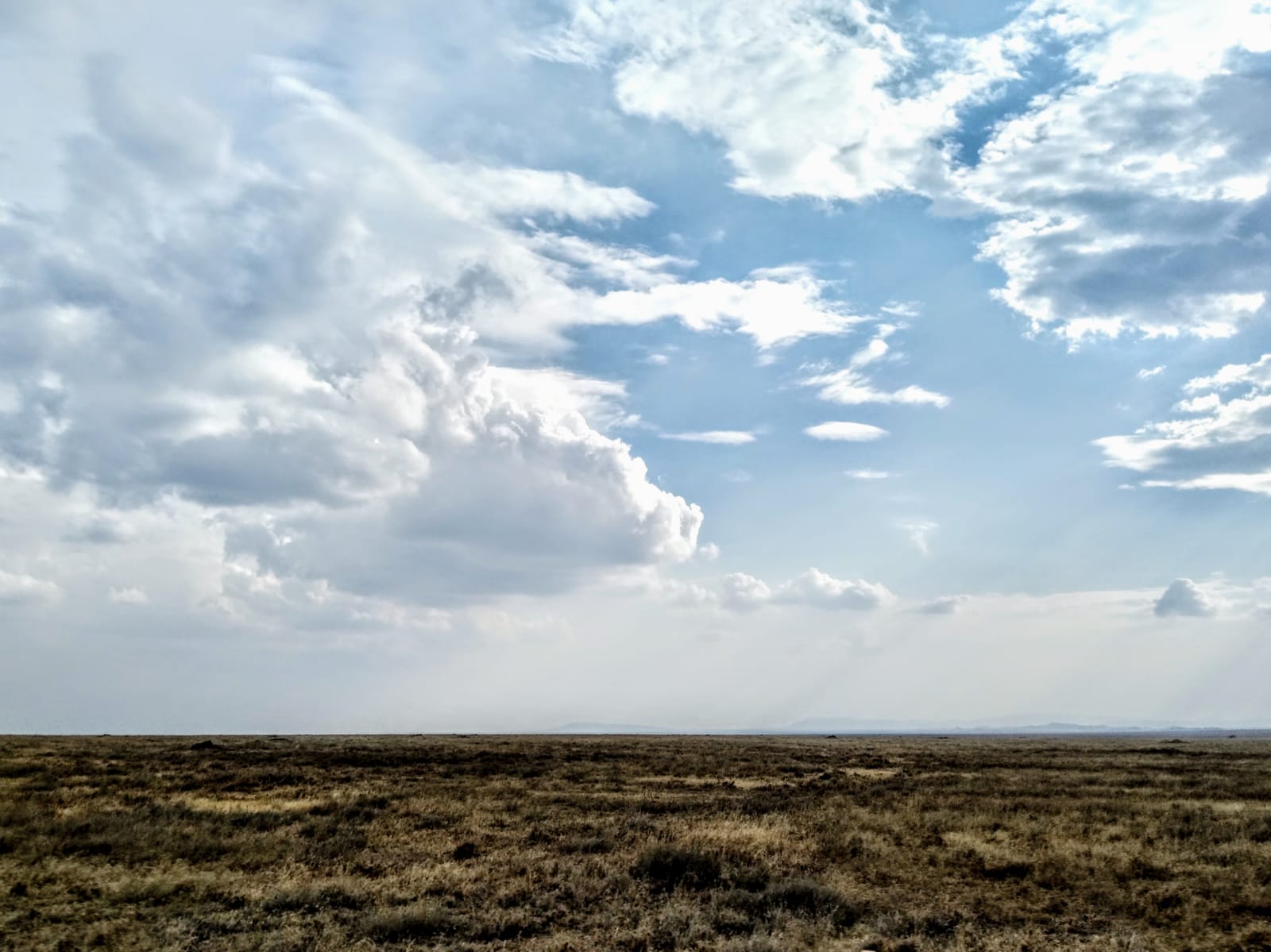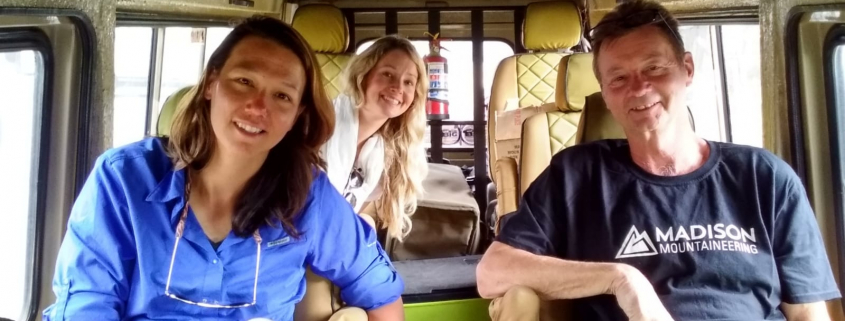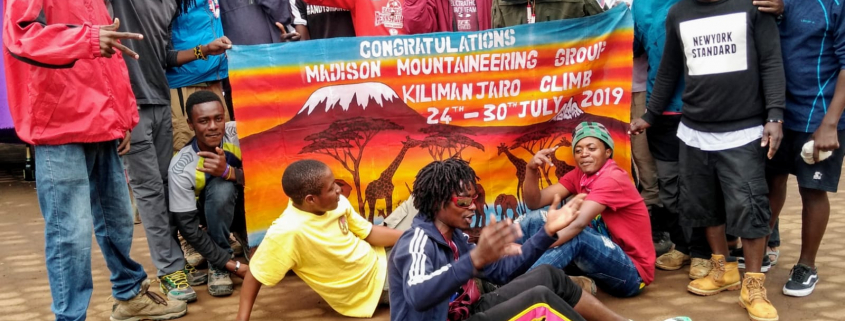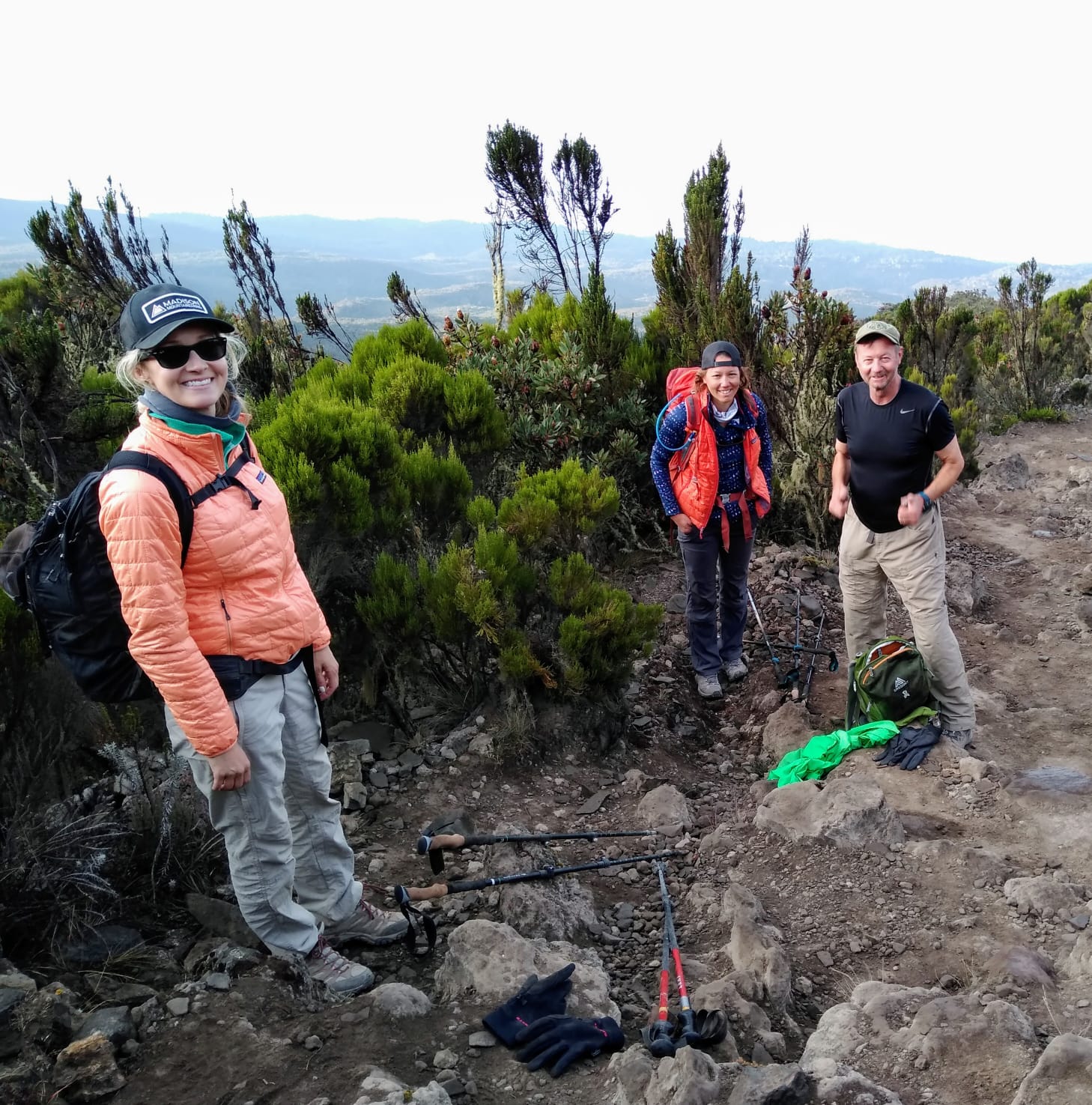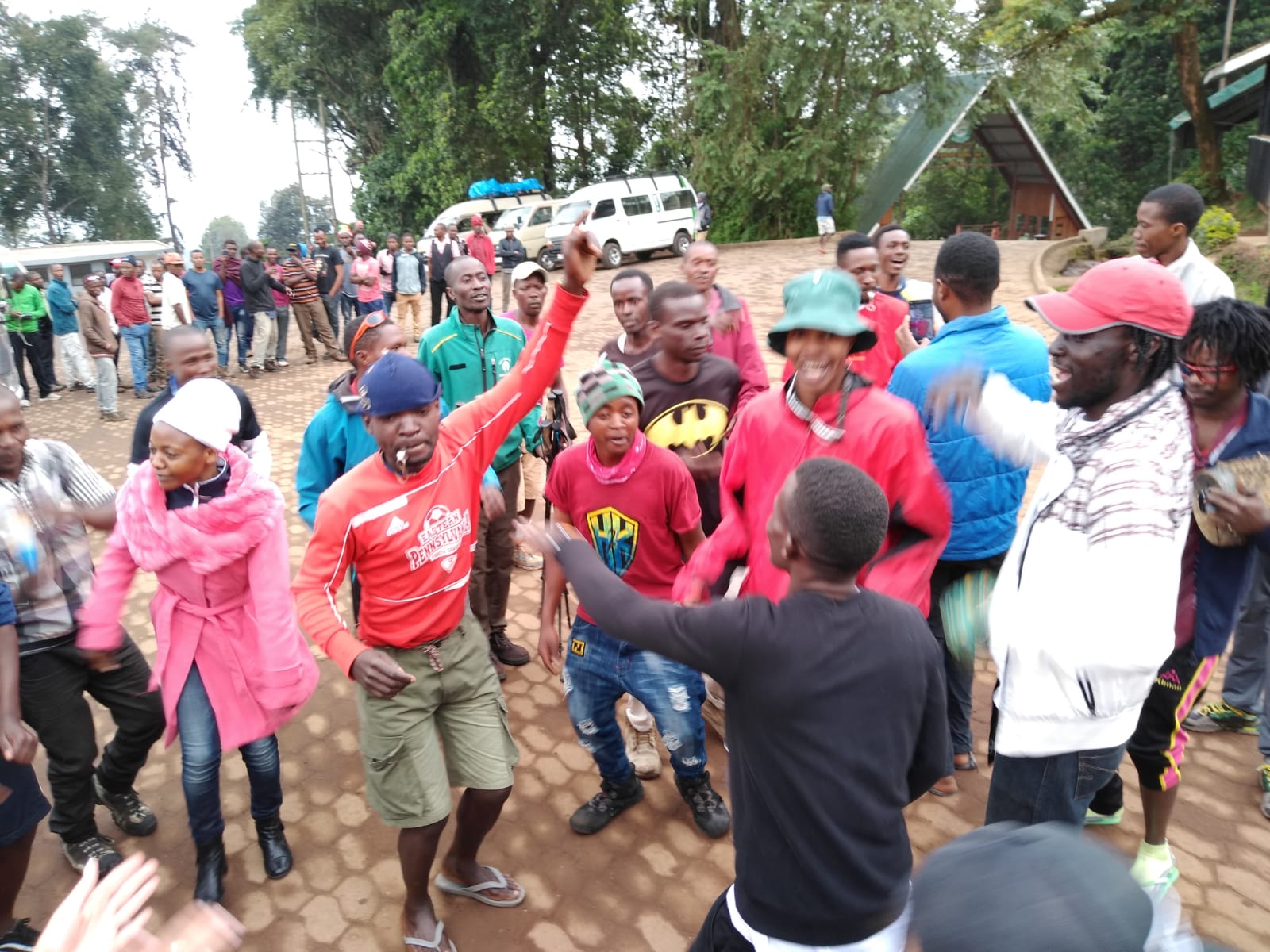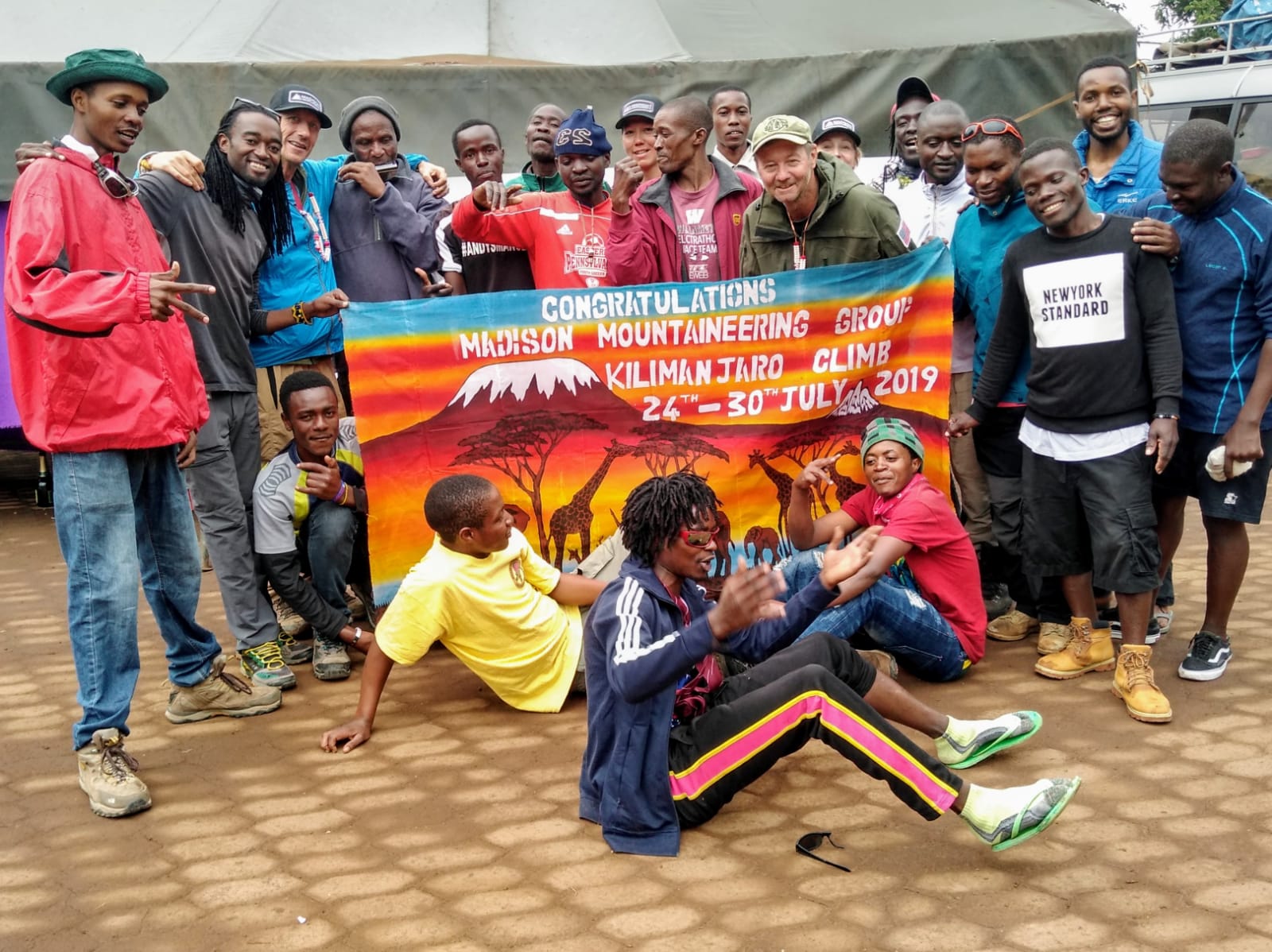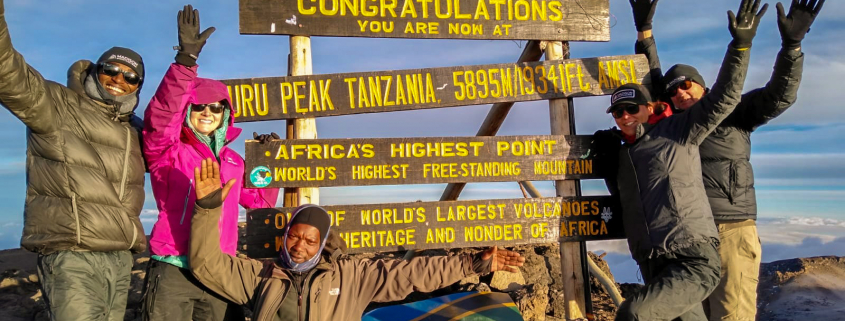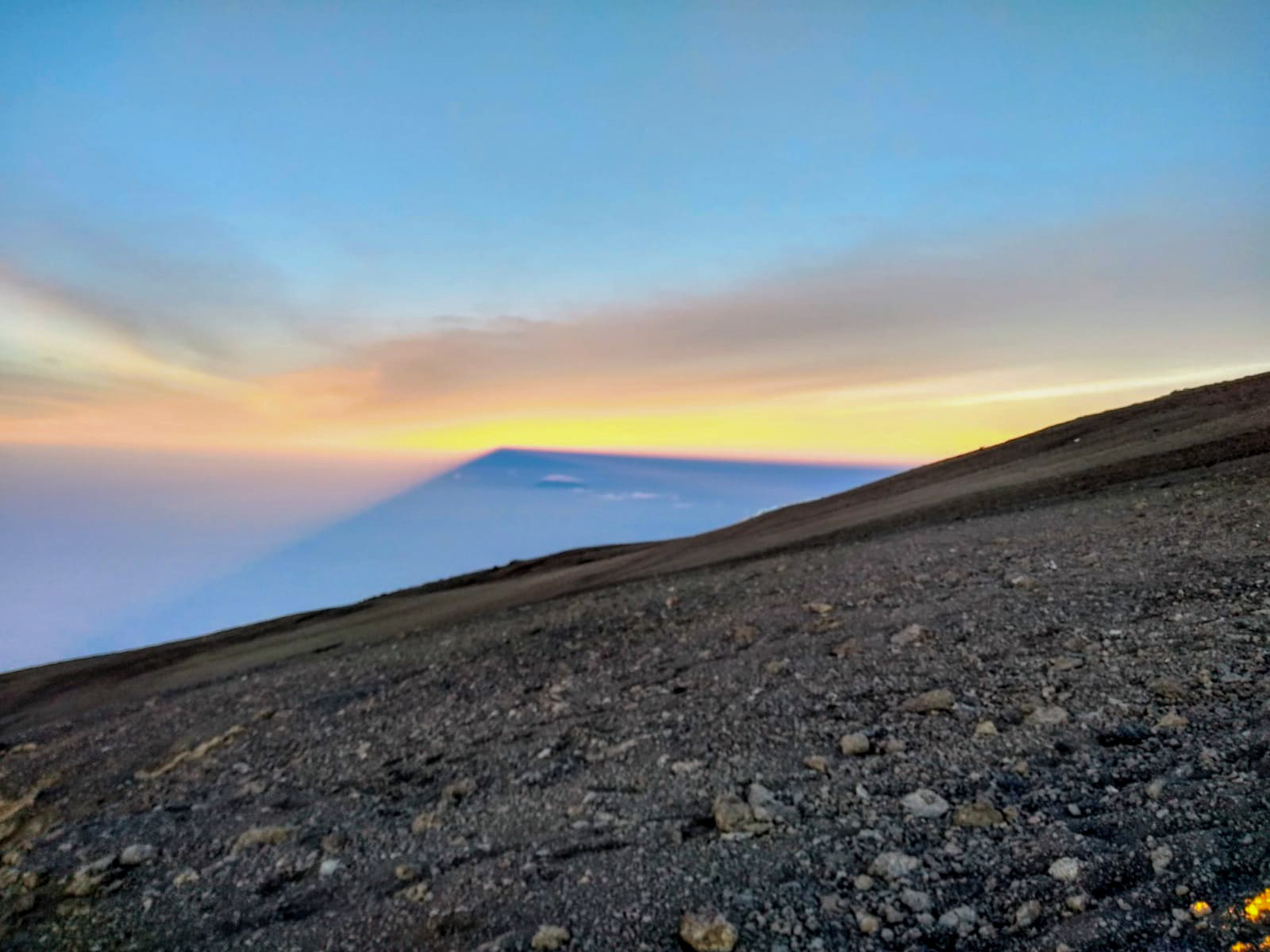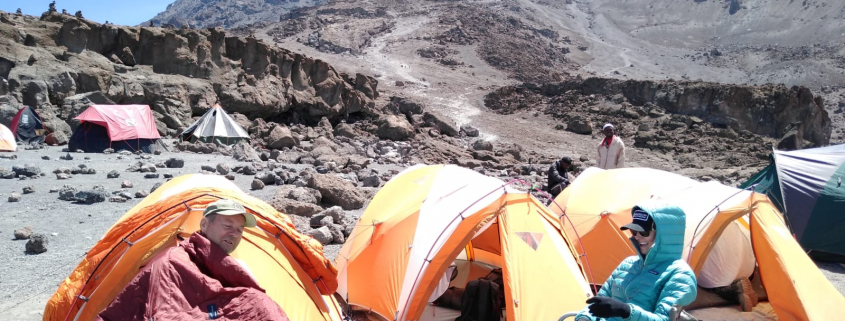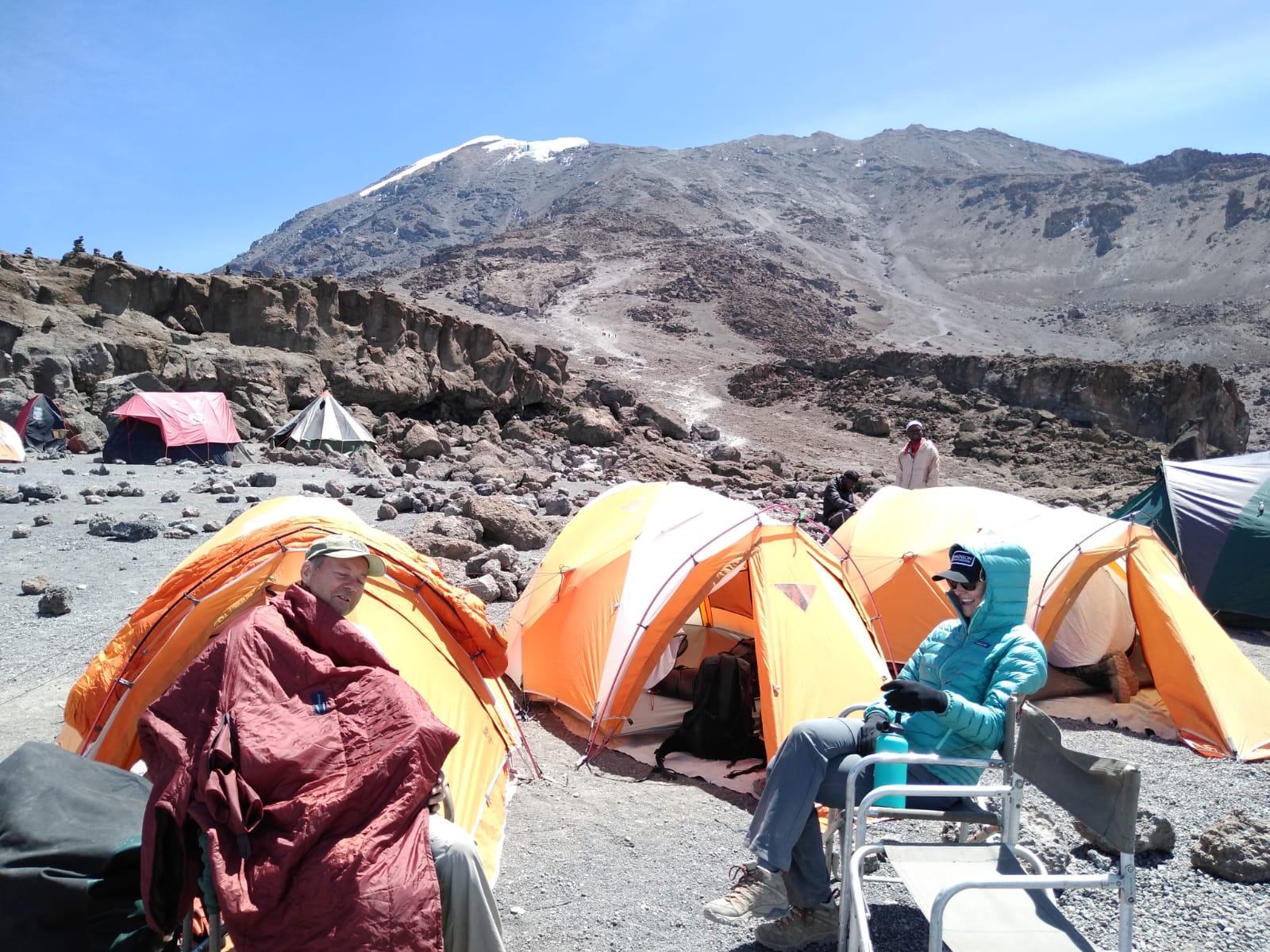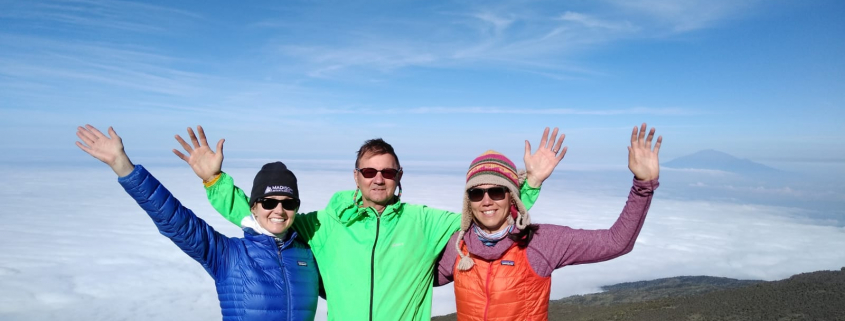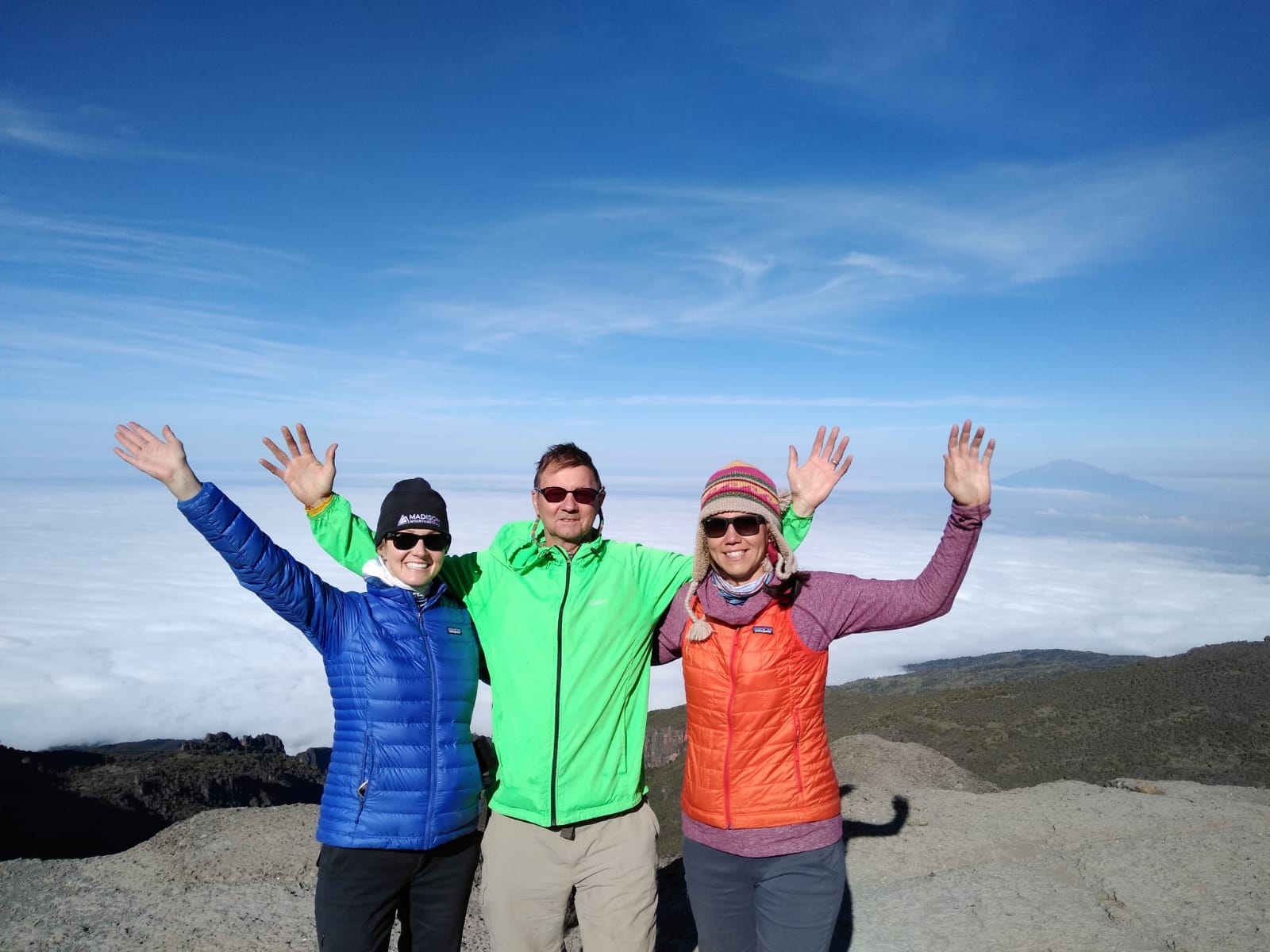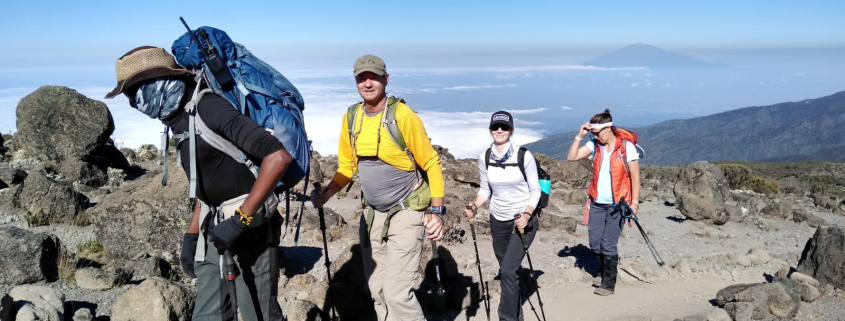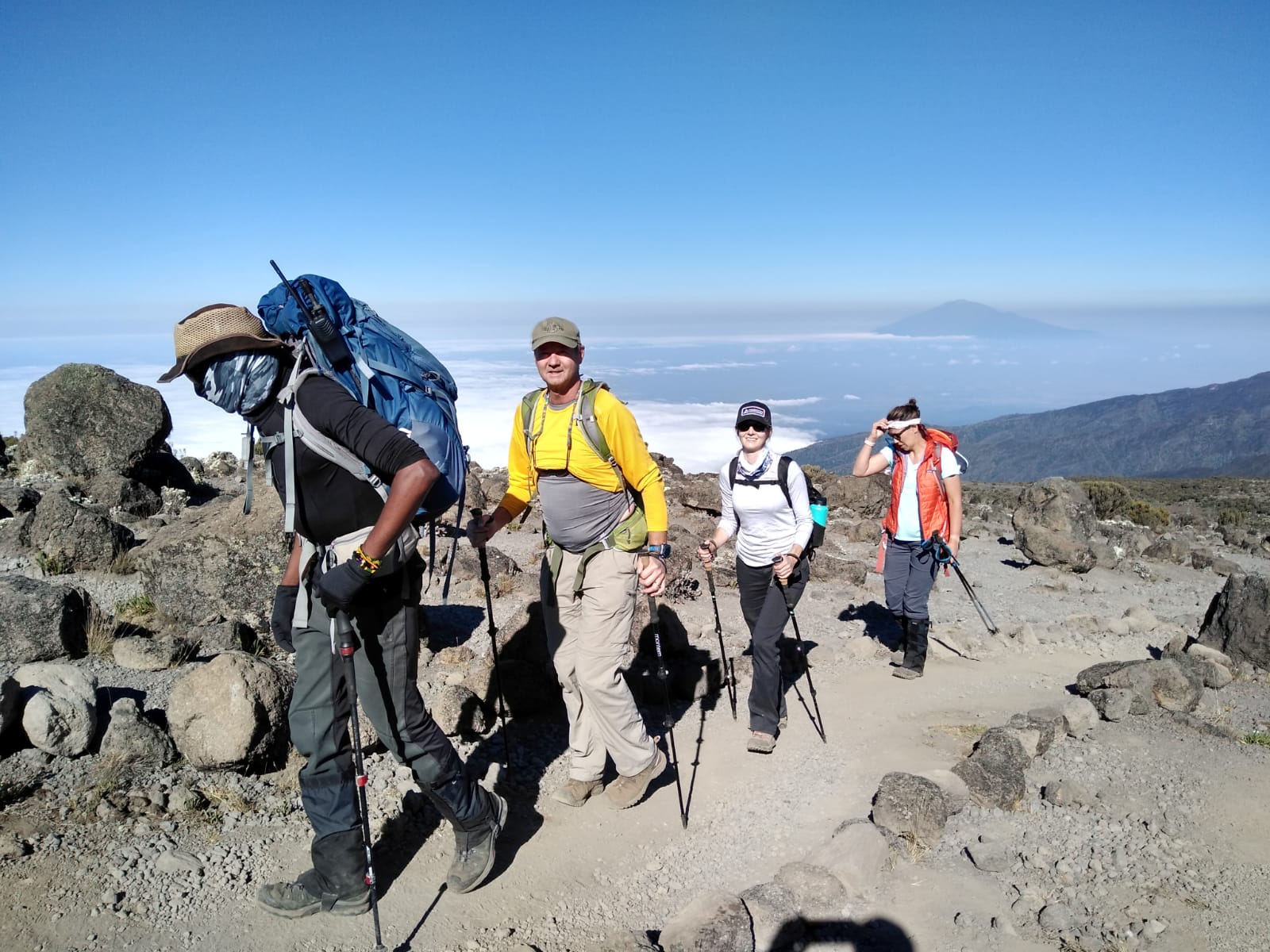Our 2019 Mt. Rainier climb supporting the Climb for Conservation fundraiser kicked off yesterday with the initial hike up to Camp Muir (10,188 ft). Here are some shots of the day. The team is likely now headed up for a sunset summit attempt. We will post an update on their progress tomorrow! Stay tuned!!
Tag Archive for: Climb for Conservation
With Kilimanjaro conquered and the safari complete, a very memorable Tanzanian expedition draws to a close and our team bids farewell to Africa as they head home. Lead guide, Rob Smith, provides the final words on the trip:
Many people have heard of ‘the big five‘ when it comes to African wildlife. The term originated from hunters, for the five most difficult animals to hunt on foot. These are lion, elephant, buffalo, leopard and rhino. It is heartening that the term associated with hunting these animals is now synonymous with wildlife tourism and conservation.
We did not see the full set of five, but that matters little as we did see so much. It is the diversity and abundance of wildlife that made our safari so memorable.
Of course the safari was after our main event, the Kilimanjaro climb. The hardships of that are beginning to fade, and the good times are becoming more memorable. Standing on the roof of Africa is not so easy, and John, Jaclyn and Kristin all managed to get there. It has been a safe, successful and enjoyable trip which has packed a lot into a relatively short time. Definitely not your average two week vacation. Thanks for following our journey!
Today’s Swahili: Kwaheri – goodbye; Karibu – you are welcome
Lead guide, Rob Smith, tells the story of the Kilimanjaro team’s final full day on safari in the mightly Serengeti:
Today exceeded all our expectations, as Jaclyn said on returning to camp.
Shortly after leaving this morning we saw several vehicles parked at the trailside. This usually means there is something of interest nearby. We pulled up and sure enough, a cheetah was sitting on top of a termite mound near the track. The fastest land animal in the world sat in front of us, just like that. It was sleek with beautiful markings. Black ‘teardrops’ noticeable on its alert and watchful face. The cheetah moved to a closer mound, rested and then crossed the track between the vehicles. It sat on another mound before dropping off, looking right but moving in a leftward arc. We could not see what the cheetah had seen until soon a Thomson’s gazelle bounded through the grass towards the cheetah. A pounce, a flurry of dust, a kicking of legs and it was all over. We were amazed to have witnessed the spectacle. Whatever your views on animals killing each other, this is the circle of life in the Serengeti.
We continued on to a rest stop, where maybe 50 tourists were gathered. 500′ away a tree stood with a rock by its base. The rock turned out to be the head of a male lion, its large mane bulking its head size. At one point, the lion stood up before lying down, now completely unseen. It made us wonder how many animals lay in the long grass out of sight nearby. The day continued, we saw a leopard perched on top of a Kopje, rock outcrop, much larger and muscular than the cheetah. We wondered what was coming next.
Two large lions chasing gazelles across the plain before stopping at a carcass surrounded by vultures. Hippos, crocodiles, elephants, giraffes, a jackal, hyenas, so many birds. A mother and young cheetah sitting in the shade eyeing up ostrich and warthogs in front of them. Two lionesses squabbled and the winner dragged a Thomson’s gazelle into cover and sat virtually unseen as it feasted on the catch. This is some of what we have seen today. It is no wonder it far exceeded our expectations.
We have another night in the Serengeti Osupuko Camp with the birds calling and wind rustling the tree branches. Tomorrow we leave the Serengeti to drive back to Arusha. Fortunately for us, we get to view more wildlife on the first part of the drive until we leave the National Park.
Today’s Swahili: Kiboko – Hippo; Chui – Leopard; Duma – Cheetah; Serengeti – Endless plain
The Kilimanjaro team is now deep into their multiday safari and having a great time. Lead guide, Rob Smith, provides the details of their day in two of the most amazing game parks in the world:
This morning we visited the Ngorongoro Crater, an area more than 180 square miles bounded on all sides by steep crater walls of a former volcano. The fertile base of the crater provides a haven for wildlife, and today it did not disappoint. Despite a misty start limiting views at the top of the crater, conditions were much clearer when we reached the base after a rough, steep descent. Buffalos and ostrich were seen on the drive down. A pool was filled with hippos, most of their bulk underwater with their backs and snouts visible. They shared the pool with pelicans while egrets, sacred ibis, and Egyptian geese sat on the banks. Two elephants stood in foliage nearby.
In the dry season, many animals are attracted to water sources, and it can be a great place to view them. Along the trails secretary birds with their snake stamping legs strutted back and forth. A jackal paced in front of our vehicle for several hundred meters before it cut off the track. Hyenas slinked around in the long grass, looking menacing. We crested a rise, and two lionesses were just off the track, focussed on a group of buffalo. They blended in perfectly with the grass and moved stealthily. With more ground to cover, we left them to it.
Leaving the Ngorongoro, we bumped and shook along the road to Serengeti National Park. Wide-open plains had us wondering if we would see any wildlife, as the area is vast. But after 5 minutes of entering the park, we spotted two more lions. Two became three which became four, and when a half-eaten leg was seen sticking up through the grass, it was clear we had come across the site of a recent kill. A pile of feathers nearby told us an ostrich had been the unlucky catch. It is disconcerting when a lion with a bloody face stares at you from not so far away. Content with their meal, they all lay down in the sun and slept, and we moved on.
So our adventure continues. Tonight we are staying in a tented camp in the Serengeti amongst this amazing habitat. Tomorrow we have another full day of safari. Let’s see what is in store for us.
Today’s Swahili: Lion – Simba — Buffalo – Nyati
Our Kilimanjaro team has returned to Arusha after coming all the way down from a great summit climb and is getting ready for their safari. Here’s lead guide, Rob Smith, with the details of the day:
After our summit yesterday we returned to Kosovo Camp (4870m/15,978ft) and had a couple of hours to rest, eat and drink, and then pack up. We hiked downhill for 3 hours to reach Millennium Camp (3820m/12,530ft) and were glad to reach it. Another early start this morning at 5 am, though practically a lie-in compared to our summit bid, saw us on our final day of Kilimanjaro. We dropped altitude and made our way from Alpine Desert to Moorland to Rainforest.
We were lucky enough to see Black and White Colobus Monkeys leaping from branch to branch high in the tree canopy. When we reached Mweka Gate (1638m/5,375ft), our exit point, we received a welcome that had everyone there looking on. The singing and dancing were well worth the effort that the team made over the last 7 days, and was a fitting end to our Kilimanjaro climb. So now we are back in Arusha before driving West tomorrow to Tarangire National Park, to begin the Safari.
Today’s Swahili: Congratulations. Hongera — Brother. Kaka — Sister. Dada
From Kilimanjaro, lead guide Rob Smith shares the happy news:
The sunrise was beautiful and gave respite from the previous hours of climbing in the darkness. Each of us in a pool of light from our headlamps, steadily climbing up the loose rock and scree. The faintest of light on the horizon, grew larger and brighter, transforming through a range of orange, red and pink hues. We reached Stella Point on the edge of the crater rim at 18,800′, and stopped for a hot drink and some shelter from the wind. From there the slope was less steep and dawn made the route finding easier. As the sun rose higher it cast a huge shadow of Kilimanjaro onto the clouds below. It put our presence on the side of the mountain, nearing its summit, into perspective. We reached the top at 6.45am, after a harder than expected climb for some. Kilimanjaro might often be referred to as a to trek, but its 19,341′ should not be underestimated.
Kilimanjaro, Uhuru Peak, is a beautiful mountain that allowed us to step on her summit a few hours ago, giving us memories to last a lifetime.
Karanga Camp to Kosovo Camp, the last segment before summit day. The Kili team has now climbed to high camp and will be heading to the summit tonight! Here’s lead guide Rob Smith with the details:
We reached Kosovo Camp (4870m/15,978 ft), our high camp at 12.15pm. For the first time in our trip, we have met successful climbers who have summitted Kilimanjaro. They did so earlier this morning and were pleased to be on their way down, as we continued up past Barafu Camp, where the majority of climbers stay. The extra effort today will give us a shorter summit day tomorrow. So now we rest, and we will have an early dinner before trying to catch a few hours sleep. Tomorrow begins at midnight, quite literally, as we will get up and prepare to leave at 1am. So wish us luck and tune in tomorrow for an update.
Today’s Swahili: Tabasamu – smile
Kilimanjaro lead guide, Rob Smith, details the team’s day moving from Barranco Camp to Karanga Camp, including the ascent of the “Breakfast Wall”:
We were awake at 5am in preparation to climb the Barranco Wall. It was a chilly morning. If we were lacking motivation, it came in heaps, from an impromptu song and dance send-off from our team. Dressed in thick coats and wooly hats, the pace ramped up until Willie threw a cartwheel followed by a backflip. Suitably impressed by his acrobatics, we left camp and were soon at the base of the Barranco Wall. 750′ of rock with a sinuous path worked into it by the passage of climbers. Part scramble, part walk, we made our way to the top. And we were rewarded with emerging into the sun and seeing a sea of cloud beneath us as far as we could see. With the crux of the day behind us, we descended towards Karanga Camp (4029m/13,220ft) with a final steep uphill to pull into camp after 4 hours.
Tomorrow we begin the final phase of the trip, as we continue to Kosovo Camp (4870m/15,978ft), our high camp. From there we will begin our summit climb in the early hours of the following morning.
Today’s Swahili: Hakuna Matata – No Problem / No Worries.
Kilimanjaro lead guide Rob Smith has this colorful description of the team’s from Shira Camp (3833m/12,575ft) to Barranco Camp (3981m/13,060ft):
Another day of beautiful weather here on Kilimanjaro. Our 6am wake up is becoming the norm, and there are no complaints when the first view is Kilimanjaro casting its shadow onto the clouds below us. The trail climbed steadily from the start, and we rose above the trees to enter a rocky landscape resembling the surface of the moon. This zone of the mountain is clasified as Alpine Desert, and is hugely different from the rainforest we started in. Despite the austere environment, there is some wildlife living here. We saw some 4 striped mice scurrying between the rocks at a rest stop. White collared ravens tustled in the air, as 2 birds locked feet together and tumbled towards the ground before releasing and flying on.
After 4.5 hours we reached Lava Tower at 15,000′ where we had an extended stop to take advantage of our height gain. Spending time there should help us sleep tonight as we have dropped in altitude to 13,000′. The trail down passed between Giant Scenecio plants which look like they belong to an older world. We reached Barranco Camp in time to have a look at Barranco Wall, a rock feature we will climb tomorrow. We are all in good spirits and are looking forward to the challenge tomorrow.

